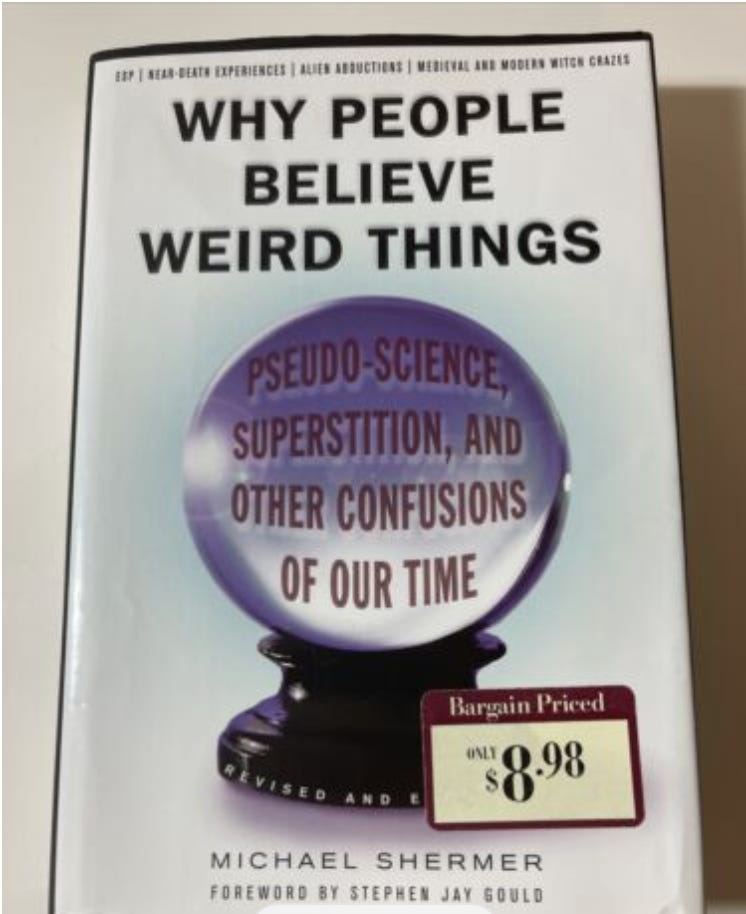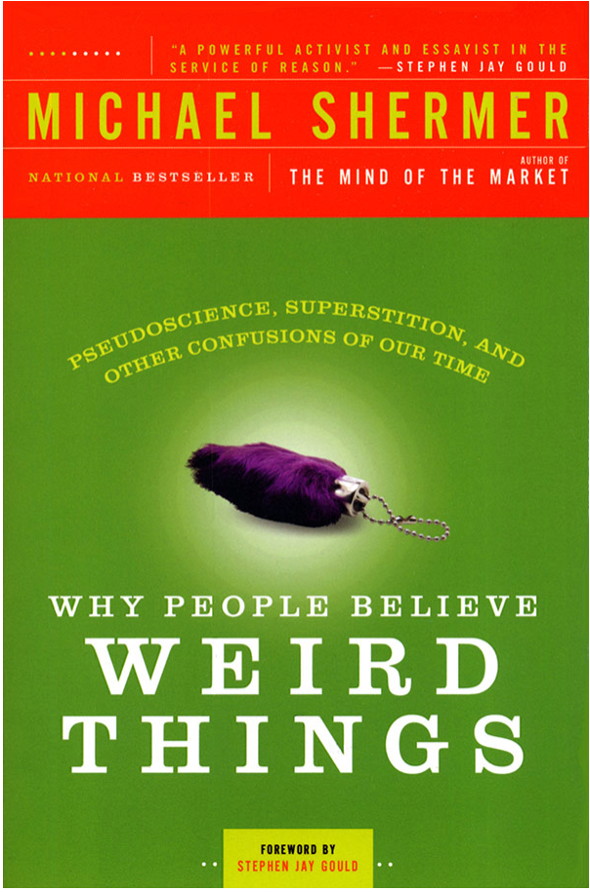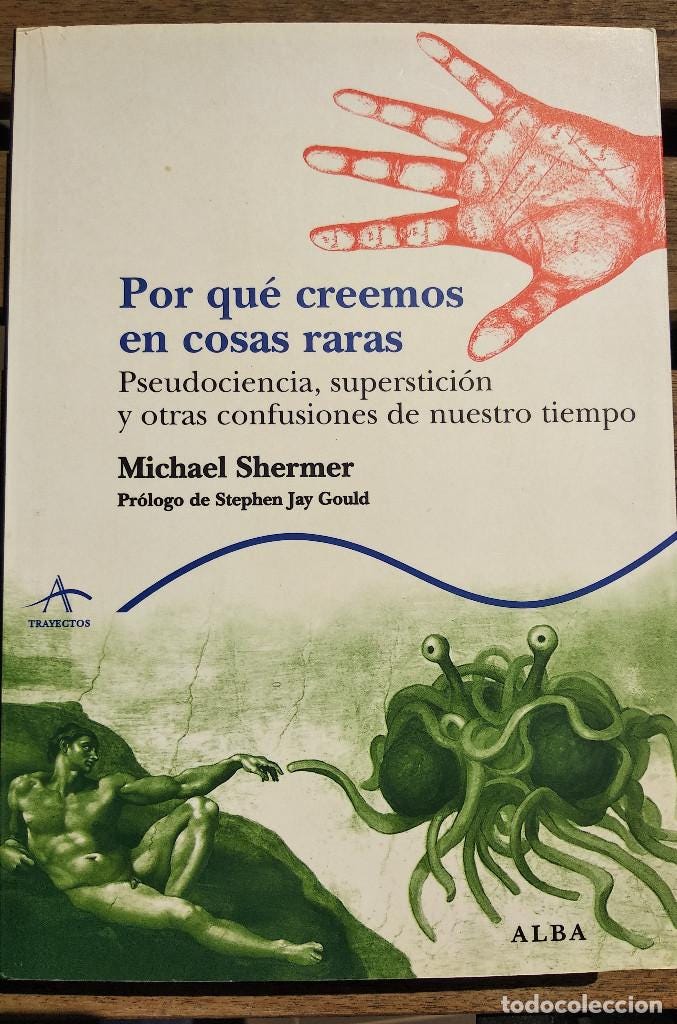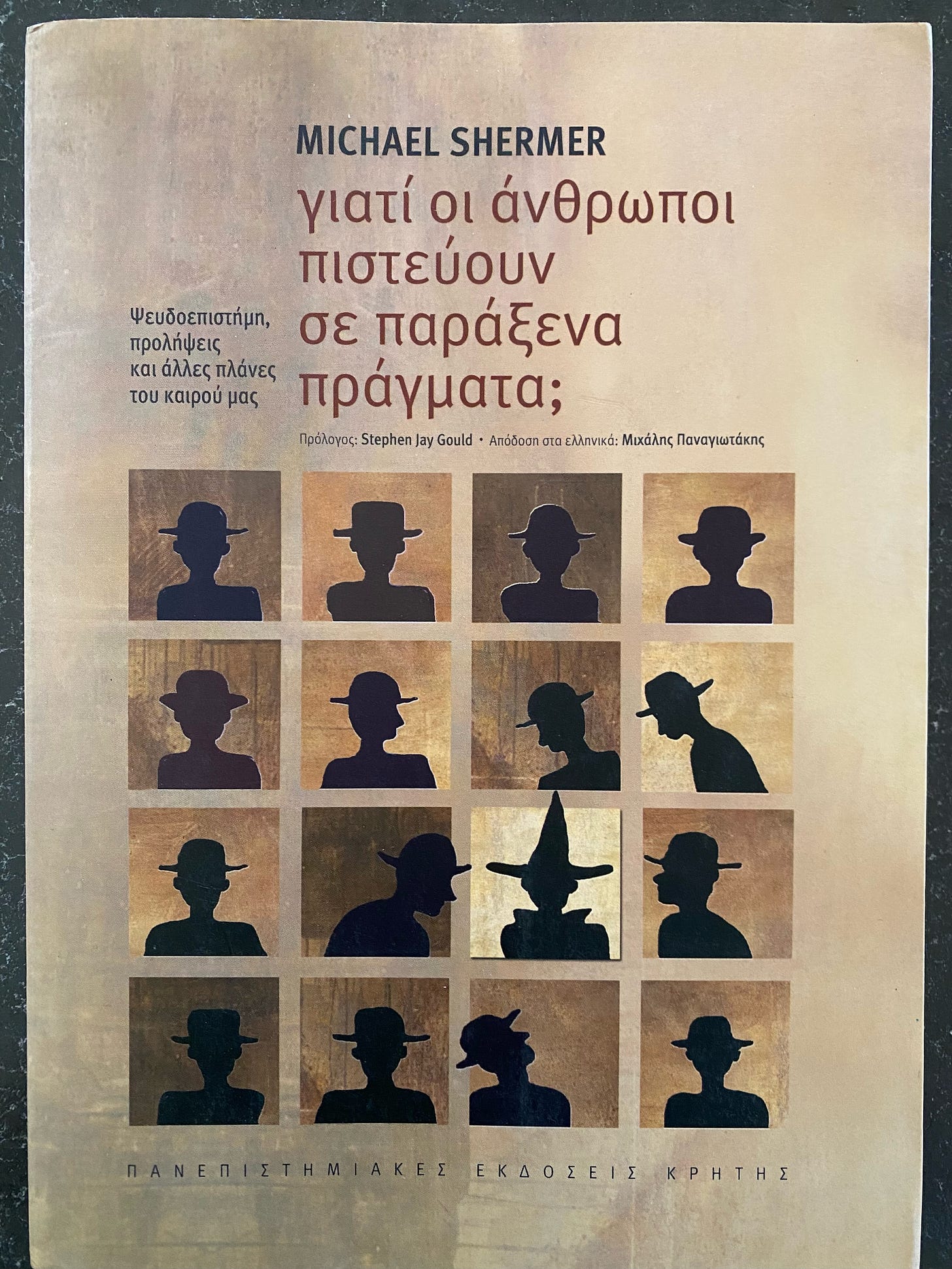Why People Believe Weird Things, 25th Anniversary
In April 1997 my first book was published. Some reflections
If you would like an autographed copy of the paperback edition through the Skeptics Society click here
If you prefer faster and cheaper through you know who (thanks Mr. Bezos) click here
In April of 1997 the publishing house of W. H. Freeman brought out my first book (if you don’t count the cycling books I wrote in the 1980s), about which I am reminded every noted anniversary of the mass suicide by members of the Heaven’s Gate cult, which happened the month before and helped launch the book onto bestseller lists. Taking one’s life in order to ascend to “The Evolutionary Level Above Human,” as was evidently believed by the cult members and expressed with enthusiasm in their final “goodbye” video statements, was seen in the media as constituting a “weird belief,” and I did a lot of interviews over the ensuing months. As for what constitutes “weird”, here is what I wrote:
For the most part, what I mean by a “weird thing” is: (1) a claim unaccepted by most people in that particular field of study, (2) a claim that is either logically impossible or highly unlikely, and/or (3) a claim for which the evidence is largely anecdotal and uncorroborated.
As for why smart people believe weird things, here is my (pre)-Twitter-length answer:
Smart people believe weird things because they are skilled at defending beliefs they arrived at for non-smart reasons.
Elaborating on this I wrote:
That is to say, most of us most of the time come to our beliefs for a variety of reasons having little to do with empirical evidence and logical reasoning (that, presumably, smart people are better at employing). Rather, such variables as genetic predispositions, parental predilections, sibling influences, peer pressures, educational experiences, and life impressions all shape the personality preferences and emotional inclinations that, in conjunction with numerous social and cultural influences, lead us to make certain belief choices. Rarely do any of us sit down before a table of facts, weigh them pro and con, and choose the most logical and rational belief, regardless of what we previously believed. Instead, the facts of the world come to us through the colored filters of the theories, hypotheses, hunches, biases, and prejudices we have accumulated through our lifetime. We then sort through the body of data and select those most confirming what we already believe, and ignore or rationalize away those that are disconfirming. All of us do this, of course, but smart people are better at it through both talent and training.
I then devoted the rest of that chapter to the psychology of belief as it relates to intelligence, gender, age, education, personality (the Five Factor model, or the “Big Five”: (1) Conscientiousness, (2) Agreeableness, (3) Openness to Experience, (4) Extroversion, and (5) Neuroticism), locus of control (internal and external), and the influence of cognitive biases such as the confirmation bias.
I dedicated the book to Carl Sagan with this explanation and epigraph:
What’s in the book? Here is the Table of Contents:
The cover is based on a painting commissioned by the publisher, which I purchased from the artist—Lawrence Berzon—and had framed. It now hangs on the wall in my podcast studio, it’s colors and design elements perfectly capturing the essences of weirdness that hovers over our cultural landscape:
The painting was used for the subsequent paperback edition:
As well as on the cover of the audiobook edition that I read, albeit an abridged edition. Perhaps one day someone will bring out an unabridged edition:
Over time the covers changed in reprints, discounted editions, book club printings, and the like, for example:
In 2002 we brought out a revised and expanded edition that includes a lengthy new chapter on “Why Smart People Believe Weird Things,” which debunks the myth that only ignorant and/or uneducated people are susceptible to pseudoscience and superstitions:
This is the current cover, which set the pattern for the paperback design of many of my books published by Macmillan’s paperback house St. Martin’s Griffin:
With a redesigned back cover:
In 2007 a British edition was published by Souvenir Press Ltd.:
I’ve lost track of how many foreign language editions there are now, but here are some that I have in my personal library. It’s always interesting to see what publishers select for cover art, over which I had no control.
Portuguese (with a Hieronymus Bosch design element):
Turkish:
Spanish (note the Flying Spaghetti Monster design element):
Spanish audio edition:
Greek (the book includes a chapter on witchcrazes):
Korean (I’m not surer what the design element is here, perhaps a printing press?):
Romanian (more Hieronymus Bosch I believe):
Japanese (the book includes chapters on creationism and Holocaust denial):
I am especially proud of the Foreword for the book by Stephen Jay Gould, as he was initially a hero and role model, then a mentor, and then a friend (here inside the dome of one of the Mt. Wilson telescopes through which Edwin Hubble discovered the expanding universe).
Gould’s commentary so perfectly captures the nature of skepticism that I shall close this reflection with these excerpts from that Foreword:
Skepticism or debunking often receives the bad rap reserved for activities—like garbage disposal—that absolutely must be done for a safe and sane life, but seem either unglamorous or unworthy of overt celebration. Yet the activity has a noble tradition, from the Greek coinage of "skeptic" (a word meaning "thoughtful") to Carl Sagan's last book, The Demon-Haunted World.
The need—both intellectual and moral—for skepticism arises from Pascal's famous metaphorical observation that humans are "thinking reeds," that is, both gloriously unique and uniquely vulnerable. Consciousness, vouchsafed only to our species in the history of life on earth, is the most god-awfully potent evolutionary invention ever developed. Although accidental and unpredictable, it has given Homo sapiens unprecedented power both over the history of our own species and the life of the entire contemporary biosphere.
Only two possible escapes can save us from the organized mayhem of our dark potentialities—the side that has given us crusades, witchhunts, enslavements, and holocausts. Moral decency provides one necessary ingredient, but not nearly enough. The second foundation must come from the rational side of our mentality. For, unless we rigorously use human reason both to discover and acknowledge nature's factuality, and to follow the logical implications for efficacious human action that such knowledge entails we will lose out to the frightening forces of irrationality, romanticism, uncompromising "true" belief, and the apparent resulting inevitability of mob action. Reason is our potential salvation from the vicious and precipitous mass action that rule by emotionalism always seems to entail. Skepticism is the agent of reason against organized irrationalism—and is therefore one of the keys to human social and civic decency.
Amen brother.
If you would like an autographed copy of the paperback edition through the Skeptics Society click here
If you prefer faster and cheaper through you know who (thanks Mr. Bezos) click here




























This is a good book. I have purchased a number of them and given them away (back in the days of book stores) to help friends deal with people in their life who believe weird things. When I teach AstroBiology, I draw upon some elements that I learned from it to explain the approach we take in considering extraterrestrial life. We also discuss many of the logical traps to avoid: confirmation bias, appeal to ignorance, false dichotomies, etc.
BTW: Never point out when a sensitive person makes an appeal to ignorance - they will usually interpret it as calling them ignorant.
You should update the book to include weird things that majorities believe such as that Covid "vaccines" and boosters are useful, safe, and effective for people younger than 40 and those in the 40-65 age range who aren't morbidly obese.